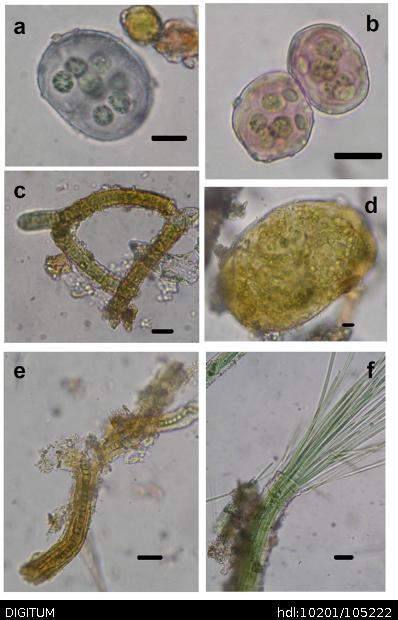Por favor, use este identificador para citar o enlazar este ítem:
https://doi.org/10.1016/j.scitotenv.2019.07.145 Twittear
Twittear


| Título: | Effects of drought and water pulses on microbial functionality and the role of Cyanoprokaryota in the rhizospheres of gypsophytes |
| Fecha de publicación: | 8-jul-2019 |
| Cita bibliográfica: | . Science of the Total Environment, 691: 919-932. |
| Materias relacionadas: | CDU::5 - Ciencias puras y naturales |
| Palabras clave: | Biogeochemical cycles, Blue-green algae, Cyanobacteria, Gypsiferous community, Rhizospheric microbiota, Semiarid environment. |
| Resumen: | The effects of drought in semiarid Mediterranean environments are known in many aspects; however, there are others for which information is lacking. In this work, two samplings were carried out - the first during a summer drought and the second during spring - in the rhizospheres of three gypsophytes and in non-rhizospheric soil, to detect the responses, fundamentally biochemical, to the availability of water in the soil. Urease and protease showed higher values after the drought whereas the activity of the β-glucosidase was highest in the spring. This pattern was the same for all the rhizospheres tested. However, the arylsulfatase and alkaline phosphatase did not change in terms of the sampling date or the rhizosphere under study. Surprising results were obtained when water retention and water loss were studied with the highest values being obtained for the dry season due to the association of Cyanoprokaryota (with high diversity and rarity) with the rhizospheresas a result of a water pulse. The results in our work are also explained by two water pulses that occurred before the samplings. Several indicators are proposed such as microbial biomass carbon and basal respiration rate responded best to the microbiological activation just after drought, together with the enzymes urease and protease. However, it was the dehydrogenase activity in spring that best reflected the microbiology associated with the carbon cycle, together with the enzyme β-glucosidase. It was showed the interrelationships between carbon and nitrogen through to the indices: water soluble nitrogen and water soluble carbon. We can propose three functional adaptation mechanisms of these plants associated with the Cyanoprokaryota in their rhizospheres. Herniaria fruticosa is a pioneer with the greatest diversity and abundance. An intermediate strategy is presented by Teucrium balthazaris, with a greater diversity and abundance of Cyanoprokaryota in spring. Finally, Helianthemum squamatum has lower diversity and abundance. |
| Autor/es principal/es: | Díaz-Pereira, Elvira Marín Sanleandro, Purificación Asencio, Antonia Dolores |
| Versión del editor: | https://click.endnote.com/viewer?doi=10.1016%2Fj.scitotenv.2019.07.145&token=WzIxMjE5MzUsIjEwLjEwMTYvai5zY2l0b3RlbnYuMjAxOS4wNy4xNDUiXQ.cSTqlBY5EgXdaj9qOG3FgssHAyI |
| URI: | http://hdl.handle.net/10201/105222 |
| DOI: | https://doi.org/10.1016/j.scitotenv.2019.07.145 |
| Tipo de documento: | info:eu-repo/semantics/article |
| Número páginas / Extensión: | 39 |
| Derechos: | info:eu-repo/semantics/openAccess |
| Matería geográfica: | Región de Murcia |
| Aparece en las colecciones: | Artículos |
Ficheros en este ítem:
| Fichero | Descripción | Tamaño | Formato | |
|---|---|---|---|---|
| Figure 6.png | 4,66 MB | image/png |  Visualizar/Abrir | |
| Díaz-Pereira et al._Digitum.pdf | 568,34 kB | Adobe PDF |  Visualizar/Abrir | |
| Díaz-Pereira et al._TablesDigitum.pdf | 467,92 kB | Adobe PDF |  Visualizar/Abrir |
Los ítems de Digitum están protegidos por copyright, con todos los derechos reservados, a menos que se indique lo contrario.

